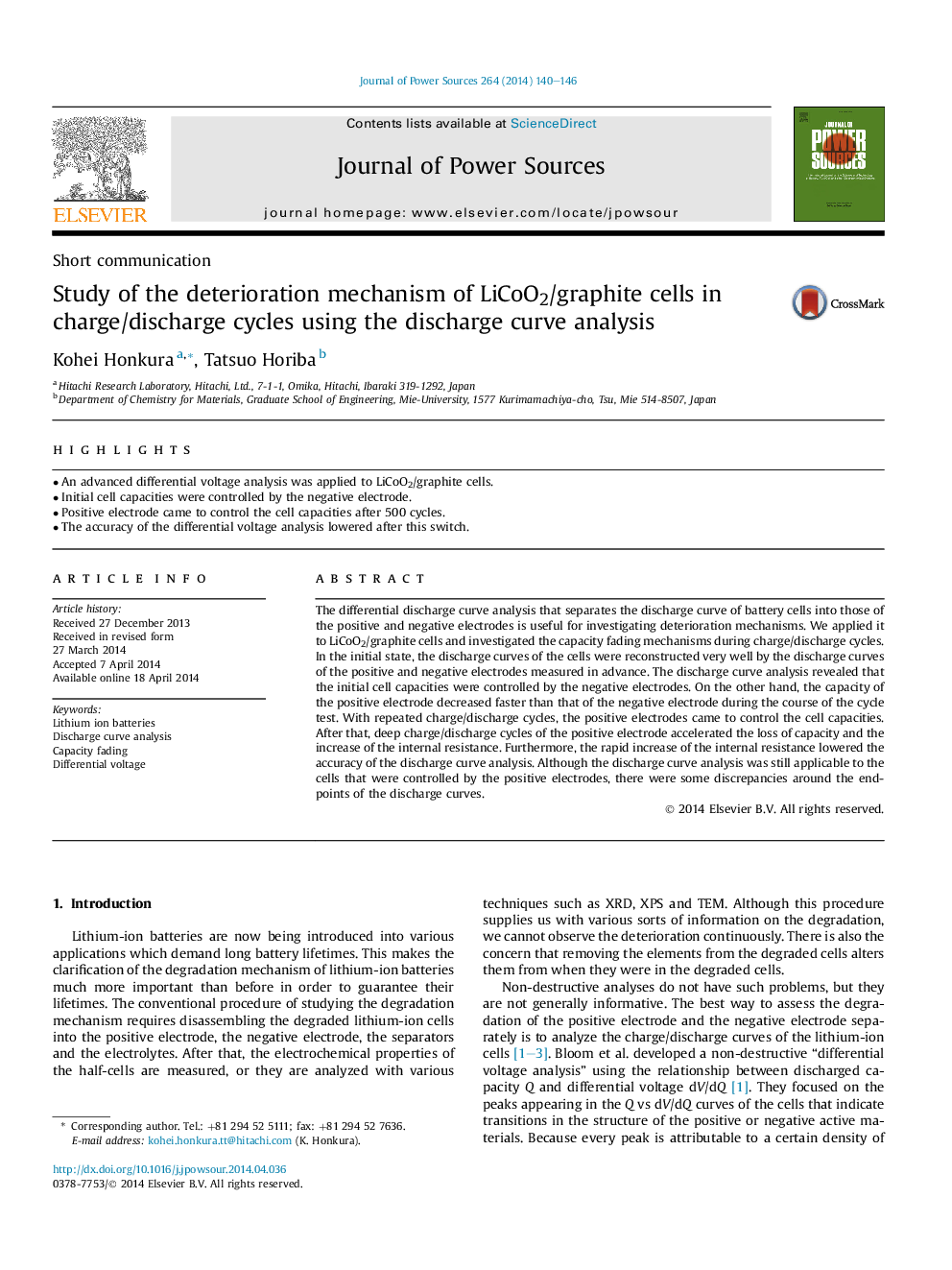| Article ID | Journal | Published Year | Pages | File Type |
|---|---|---|---|---|
| 1284100 | Journal of Power Sources | 2014 | 7 Pages |
•An advanced differential voltage analysis was applied to LiCoO2/graphite cells.•Initial cell capacities were controlled by the negative electrode.•Positive electrode came to control the cell capacities after 500 cycles.•The accuracy of the differential voltage analysis lowered after this switch.
The differential discharge curve analysis that separates the discharge curve of battery cells into those of the positive and negative electrodes is useful for investigating deterioration mechanisms. We applied it to LiCoO2/graphite cells and investigated the capacity fading mechanisms during charge/discharge cycles. In the initial state, the discharge curves of the cells were reconstructed very well by the discharge curves of the positive and negative electrodes measured in advance. The discharge curve analysis revealed that the initial cell capacities were controlled by the negative electrodes. On the other hand, the capacity of the positive electrode decreased faster than that of the negative electrode during the course of the cycle test. With repeated charge/discharge cycles, the positive electrodes came to control the cell capacities. After that, deep charge/discharge cycles of the positive electrode accelerated the loss of capacity and the increase of the internal resistance. Furthermore, the rapid increase of the internal resistance lowered the accuracy of the discharge curve analysis. Although the discharge curve analysis was still applicable to the cells that were controlled by the positive electrodes, there were some discrepancies around the endpoints of the discharge curves.
